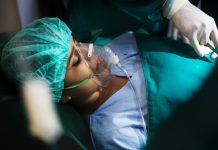
Hip fractures are a severe health concern, especially among the elderly. They not only incur significant healthcare costs but can be life-threatening.
An Australian study now suggests that even minor improvements in bone health at a community level could have a significant impact on reducing the risk of such fractures.
The Research
Led by Distinguished Professor Tuan Nguyen from the University of Technology Sydney, the study analyzed data from more than 3,000 individuals aged 60 and above.
The data was part of the Dubbo Osteoporosis Epidemiology Study, one of the longest-running studies of its kind.
The research found that even a small increase in bone mineral density could lead to a significant decrease in hip fractures.
Between two cohorts studied, a 3% increase in bone density led to a 45% reduction in hip fractures.
Simple Measures Make Big Differences
Nguyen emphasized the importance of simple, preventive measures that individuals can take to improve their bone health. “Osteoporosis is a disease characterized by weak and brittle bones.
However, the majority of hip fractures occur in people who do not have osteoporosis. Therefore, it’s crucial for everyone to take actions to improve bone health,” he said.
He pointed out that lifestyle changes such as quitting smoking, engaging in moderate physical activity, and maintaining a healthy diet rich in vitamin D and calcium can all contribute to better bone health.
Implications for Public Health Policies
This study supports British epidemiologist Geoffrey Rose’s theory that population-based measures offering minor individual benefits can result in significant community advantages.
Dr. Thach Tran, the study’s first author, said, “Our study suggests that population strategies focused on reducing risk in those at low or moderate risk are likely to be more effective than strategies just focused on high-risk individuals.”
Lessons and Takeaways
The results are important for policymakers, healthcare professionals, and individuals alike.
“The findings also imply that the categorization of bone mineral density into osteoporosis or non-osteoporosis based on an arbitrary threshold is not an optimal approach for identifying people at high risk of fracture,” Tran added.
Professor Nguyen likens the community benefits to wearing a seatbelt: “The individual benefit may seem minor because the chances of having an accident are low, but collectively, these actions can save lives.”
In summary, the study provides a compelling argument for focusing on bone health as a preventive measure that can benefit individuals and communities.
It calls for a more comprehensive, community-based approach to managing bone health, urging everyone, not just high-risk individuals, to take simple measures that can have a significant impact.
The study was published in the Journal of Bone and Mineral Research.
Follow us on Twitter for more articles about this topic.
Copyright © 2023 Knowridge Science Report. All rights reserved.



